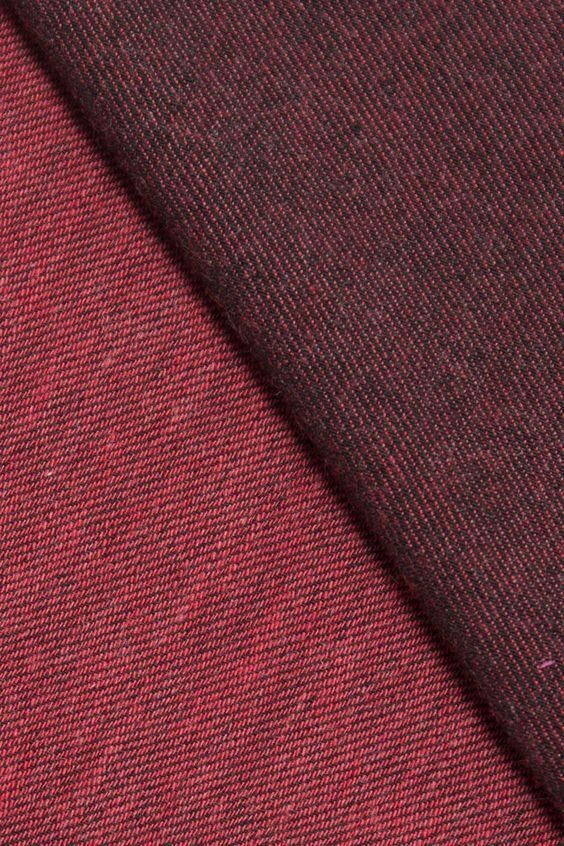Flannel is a versatile fabric appreciated for its softness and warmth. Whether you’re envisioning cozy winter nights or classic outdoor attire, understanding what flannel is all about unlocks a world of comfort and style.
Defining Flannel Fabric
At its core, the term “flannel” encompasses any cotton, wool, or synthetic fabric that shares these fundamental characteristics:
- Softness: Essential to the flannel definition.
- Texture: Flannel can be either brushed (napped) or unbrushed, both offering a characteristic feel.
- Material: While various materials can be utilized, the ideal flannel balances softness and insulation. Materials like silk are generally unsuitable.
A Journey Through Flannel History
The origin of the word “flannel” is traced to Wales, with the term “flannelle” appearing in France as early as the 17th century. While experiencing fluctuating popularity in France and other parts of Europe, flannel has remained a staple in Welsh textile traditions.
Regional Variations of Flannel
Welsh flannel is diverse, with variations linked to specific towns and regions. Llanidloes flannel differs from Newtown flannel, setting Welsh flannels apart from other European varieties.
The Modern Interpretation of Flannel
Fueled by the plaid resurgence of the 1990s, flannel gained widespread popularity. However, the term’s definition has broadened over time, now encompassing fabrics made with synthetic fibers alongside traditional Welsh flannel.
Flannel vs. Plaid: Untangling the Terms
It’s important to distinguish flannel from plaid. Plaid is a pattern applicable to various materials, while flannel is a fabric type known for its softness. Plaid shirts can be made from flannel, but not all plaid garments are flannel.
The Manufacturing Process of Flannel
The creation of flannel involves several key steps:
- Base Material Production: Cotton, wool, or synthetic textiles are selected based on the desired end product. Finer fabrics are avoided.
- Yarn Spinning: Textile yarn is spun, with considerations made for flannel’s specific requirements.
- Fabric Weaving: Typically a twill or plain weave is employed. Napping, a process that creates a soft texture by distressing the spun fiber, is often applied to one or both sides. This process gives the fabric its signature look and feel, though it can slightly reduce durability.
- Final Treatments: Synthetic flannels may receive flame-retardant coatings. Wool is naturally flame-resistant, while cotton flannel can undergo various treatments. Merino wool flannel is a safer, more organic option.
Flannel’s Diverse Applications
Flannel’s versatility makes it suitable for a wide range of applications:
Apparel
The classic plaid flannel button-down epitomizes the outdoor lifestyle. Flannel is also utilized in sweaters, cardigans, and other cold-weather garments. Any cotton, wool, or synthetic garment that has been napped is generally considered flannel.
Accessories
Flannel is sometimes incorporated into bags, purses, and belts, often featuring plaid patterns.
Homewares
Flannel is a popular choice for homewares, especially bedsheets. Consumers appreciate flannel sheets for their softness, moisture-wicking properties, and cozy feel during winter.
Global Production Hubs for Flannel
The primary producing country for flannel depends on the base material:
Wool Production: Australia
Australia leads the world in wool production, boasting a large population of merino sheep.
Cotton Production: India
India is the largest producer of cotton, solidifying its position as a major textile manufacturer.
Synthetic Textile Production: China
China is the dominant producer of synthetic textiles like polyester and nylon, some of which are used in flannel production.
Factors Influencing Flannel Fabric Costs
The price of flannel varies based on several factors:
Textile Composition
Cotton generally costs more than synthetics, while high-grade wool commands the highest price.
Weave Quality
The skill of the weaver significantly impacts the fabric’s quality. Companies emphasizing sustainability and natural fibers are more likely to produce high-quality flannel.
Treatments and Dyes
Flame-retardant or waterproof treatments can increase the price of flannel.
Exploring Different Types of Flannel Fabric
Flannel comes in various forms:
- Wool Flannel: Traditionally made from wool, common in Welsh and European flannels.
- Cotton Flannel: Gained popularity during the Colonial era and remains popular for soft garments and bedsheets.
- Synthetic or Mixed Flannel: Made with synthetic materials like polyester or nylon.
- Ceylon Flannel: A 50/50 blend of cotton and wool.
- Baby Flannel: Napped on both sides and prized for its fineness, ideal for sensitive skin.
- Diaper Flannel: Used in reusable baby diapers, napped on both sides for absorbency.
- Vegetable Flannel: Made from cellulose, popular in 19th-century Europe.
- Flannelette: Woven differently, resulting in a slightly coarser texture.
Environmental Considerations of Flannel
The environmental impact of flannel depends on:
Material Selection
Wool is the least polluting, followed by cotton. Synthetic textiles have the greatest impact. Choosing natural fabrics produced with sustainable practices minimizes harm.
Manufacturing Processes
Sustainable companies prioritize ethical production and safe materials, minimizing the environmental impact of dyes and treatments.
Fair Trade Practices
Supporting ethical companies and uplifting textile-producing communities contributes to ecological well-being.
Flannel Fabric Certifications
Certifications ensure responsible production:
Global Recycled Standard (GRS)
GRS certifies companies using recycled materials in their textile products, including synthetic and natural fibers.
Woolmark
Woolmark certifies wool sourced and produced with ethical practices.
Conclusion
Flannel’s enduring appeal lies in its versatility, comfort, and rich history. Understanding its properties, production, and environmental impact empowers informed choices, ensuring that your flannel selections align with both your personal style and values. Consider choosing certified, sustainably produced flannels for a positive impact.
